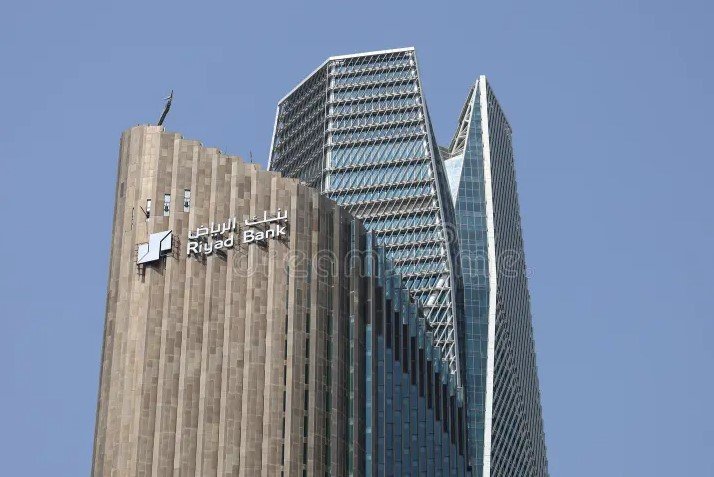Draft legislation targets financial resilience, crisis preparedness, and oversight of massive infrastructure lending
Saudi Arabia’s central bank has taken a decisive step in tightening control over its banking system by submitting a draft law that could reshape financial regulation across the Kingdom. The move comes amid growing credit activity, mega-project risks, and the country’s ambitious economic transformation under Vision 2030.
The proposed law, confirmed by the International Monetary Fund (IMF) in its latest Article IV review, reflects Riyadh’s shift toward a more cautious and structured financial environment — one built to withstand shocks while keeping lending robust.
IMF Backs Reforms, Cites Low Inflation and Strong Growth
The IMF’s 2025 Article IV report was clear: Saudi Arabia’s financial system is holding firm. The non-oil economy is chugging along, private sector spending is solid, inflation’s flat at 2.2%, and unemployment is already below Vision 2030’s benchmarks. That’s not a bad place to be.
But with growth comes risk. The IMF noted that while the banking system looks healthy — with capital buffers and barely any bad loans — authorities still see the need to upgrade the rules of the game.
SAMA, the Saudi Central Bank, is reacting to a mix of challenges: rising infrastructure lending, rapid credit growth, and a need to modernize supervision tools. It’s not about panic. It’s about getting ahead of trouble.
What’s In the New Banking Draft Law?
The central bank hasn’t publicly released the full draft, but IMF insiders and financial officials gave hints of what’s on the table.
A few of the key changes being considered include:
-
A risk-based supervisory system that grades banks on how much danger they pose to financial stability.
-
A formal bank resolution mechanism, allowing authorities to step in and rescue failing institutions without chaos.
-
A countercyclical capital buffer, set at 100 basis points, to stop banks from lending too much when the economy is booming.
-
Better tracking of infrastructure and construction-related credit, a hot area given Saudi Arabia’s mega-projects like NEOM and The Line.
-
Upgrades to anti-money laundering and counter-terror financing (AML/CFT) oversight, including thematic on-site inspections.
Some of these changes are already in motion. But legal backing is what turns guidelines into enforceable mandates.

Sector Health Check: Capital Strong, Defaults Rare
SAMA and the IMF both agreed on this: Saudi banks are in solid shape.
Here’s a quick look at the latest numbers:
| Indicator | Value |
|---|---|
| Solvency Ratio | 19.6% (end of 2024) |
| Non-performing Loan Ratio | Lowest since 2016 |
| Inflation | 2.2% |
| GDP Growth (Non-oil) | Steady, private-led |
| Unemployment Rate | Below Vision 2030 target |
That solvency ratio? It’s well above the global standard. And non-performing loans? The lowest they’ve been in nearly a decade.
But the IMF warned that risks can build fast, especially when credit expands too quickly. That’s why SAMA’s looking at its prudential toolkit again — stress testing, capital rules, early warnings — all of it.
Construction Boom Brings Big Lending Risks
This is where things get tricky. Saudi Arabia is pouring trillions into mega-projects — think NEOM, Red Sea Global, Qiddiya. The financing often comes from domestic banks, and that’s raising red flags among regulators.
Some banks are heavily exposed to just a few massive construction clients. If one of those projects goes sideways — delays, cost overruns, investor pull-outs — the dominoes could start falling.
SAMA’s trying to stay ahead of that curve. It’s introduced monitoring systems to track project-related loans, and the IMF praised those efforts. Still, without tighter laws, oversight can only go so far.
One sentence here: Risk isn’t just a buzzword — it’s built into the blueprint.
Emergency Liquidity, But With Strings Attached
Another area of concern is crisis response. What happens if a bank faces a sudden run on deposits? Or a liquidity crunch?
The IMF noted that SAMA is building out its crisis management framework, which includes an Emergency Liquidity Assistance (ELA) scheme. Basically, if a solvent bank runs short of cash, the central bank can step in — but only under strict conditions.
This isn’t about bailouts. It’s about buying time.
So far, the IMF said SAMA has made “good progress” on the emergency protocols. But it also added that this should be finished “without undue delay.” That’s IMF speak for: Don’t drag your feet.
One Step Closer to a Stronger, Safer Banking Future
It’s a quiet reform, but a powerful one.
The draft law is not flashy. It doesn’t grab headlines like oil deals or skyscraper launches. But in terms of long-term financial stability? This is the stuff that matters.
What makes this move different is the timing. Saudi Arabia isn’t doing this because it’s in crisis — it’s doing it from a position of strength. That’s rare. And it signals that policymakers are thinking beyond the current boom.
For now, the law sits with legislative authorities. It’ll likely go through some back-and-forth revisions before hitting the final approval stage.
Until then, banks will keep lending, projects will keep breaking ground, and SAMA will quietly test its new tools in the background.
And maybe that’s the best way to build — slowly, carefully, but with steel in the foundation.
